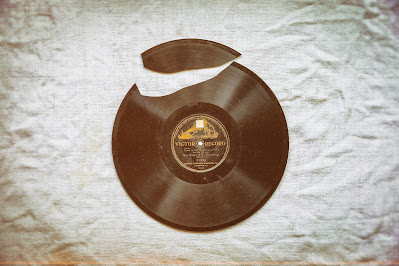It has been a little over two years since my last major rant about Apple Music. I occasionally whinge on Twitter or FaceBook, but no one really pays any attention — mainly because they are currently busily techsplaining why the latest Apple Hardware sucks. I currently have three issues, and they are all show-stoppers!
 |
Photo by Mick Haupt on Unsplash |
- I usually can’t quit Apple Music without having to resort to a piece of third-party software
- Search regularly crashes the Music app
- I sometimes can’t add any more music to my library (sometimes I can!)
- Downloaded albums and playlists randomly get stuck during playback at the end of a song
Apple Music ignores the request to Quit
When I have to use a third-party piece of software to close the Apple Music application, I’m pretty sure that the end is nigh. 99 times out of 100, Apple Music won’t Quit, won’t Force Quit, won’t quit via Activity Monitor — occasionally it pretends to, but then it reopens immediately. The only way I can get it to quit is to use NoTunes. This is insane. Nobody should have to write a utility to close a standard commonly used application on a modern operating system!
Search crashes the Music App
Another regular glitch is attempting any search crashes the Music app completely. It doesn’t matter if I’m looking in my library or Apple Music (iTunes Store seems to be exempt, though!), the app will panic and die. Of course, that then requires the automatic library check to kick in, during which time I can do nothing except wait. Why can’t this be a partially modeless activity? At least let me look at Listen Now, Browse Apple Music or reset my sound levels.
What’s with the 100,000 iCloud Library limit?
I’m old school. It comes from having lived abroad with crappy, expensive and low data allowances, which means I store all my music on external drives rather than streaming. My music library (my own music (ripped or purchased) and Apple Music tracks — I split out TV and Movies years ago) is now just under 1Tb in size with over 100,000 songs, split across 9000 albums by 2000 artists. So, it’s big, and it’s now subject to the ridiculous Apple restriction that an iCloud music library cannot contain more than 100,000 songs.
Let’s just quickly look at that restriction. Officially, that 100,000, apparently arbitrary limit, doesn’t include purchases from the iTunes Store. It says so in Apple’s documentation, although by all accounts, this is acknowledged by Apple support to be incorrect, and they keep saying that the documentation needs to be updated. If this were true, I wouldn’t have any problems because three-quarters of my music was purchased from iTunes! Even a 100,000-song library takes up less than 2Gb of space. As an Apple+ subscriber, I have access to 2Tb of storage, so that sounds like nonsense unless Apple Music developers simply cannot understand how to work with large libraries — which, in this day and age, also sounds like nonsense. It gets a little more bizarre, though. Under certain (random) circumstances, I can add music to the library. Sometimes just a song, sometimes a couple of albums, but mostly, I get an error message saying this addition would take me over the 100,000 song limit. Even more bizarrely, I can continue adding albums to my iOS devices, although they won’t appear in the macOS library. It’s the inconsistency that I hate.
Music randomly stops playing after a downloaded song ends
Now I’ve got that particular rant off my chest; here’s the real problem. When I play downloaded music, regardless of whether it was purchased or part of the Apple Music collection, I rarely get to listen to more than a couple of tracks before it stops playing. Usually, a track will finish, and another one or maybe two tracks will play before it all goes quiet. The progress bar will show the first track that failed and indicates that the song never started playing. At some stage in the process, Apple Music hangs briefly and then recovers but has lost its memory and can’t figure out what it’s doing. The only way to recover is to open Apple Music and physically stop the ‘current’ track, and either start playing it again or skip to another track. If like me, you are listening to music in the shower and this happens, there is nothing you can do. Even Siri can’t help because the system status has got so confused that it can’t work out what’s happening.
I have tried everything ever mentioned in the history of Apple Music and iTunes, but I cannot get over this. It happens on multiple M1 and Intel Macs. It happens with different drives and even the internal drive — I’m lucky enough to have a 2Tb SSD on my M1 13” MBP, which happened on that when I tested it. I have rebuilt the library from scratch. I downloaded every single track again. I’ve deleted caches. I reinstalled macOS time and time again, including a clean install.
The case for splitting Apple consumer apps out of macOS gets better by the day
And this last idea of having to download and reinstall the entire OS to fix a problem with one app is out of the dark ages of bad software design and delivery. It’s long gone time that Music, Mail, TV, Maps, Home, Photos and maybe even Messages, Safari, FaceTime, Calendar and Contacts were all built and delivered as stand-alone apps, just like Pages, Numbers and Keynote. As a developer back in the day, the mantra was always to decouple code and subsystems as much as possible so that a problem with one part had as little effect as possible on the system as a whole. Why do the developers of the consumer apps need to work to the same delivery cadence as the macOS team? That’s simply bad management. iOS allows you (these days) to install just about any Apple app independently of the OS. It’s high time the mothership caught up! Even if they are unwilling to change the cycle of releases, at least let us delete and reinstall consumer apps via the Mac App Store!
With the Far Out event due to take place next week (September 7th) and the imminent release of Ventura, I’m hoping that some of these problems may magically disappear. But I’m not going to hold my breath! Failing that, it may be the next best thing will be a clean install of Ventura rather than an update — and then see what new problems I’ll encounter! Better the devil you know?






